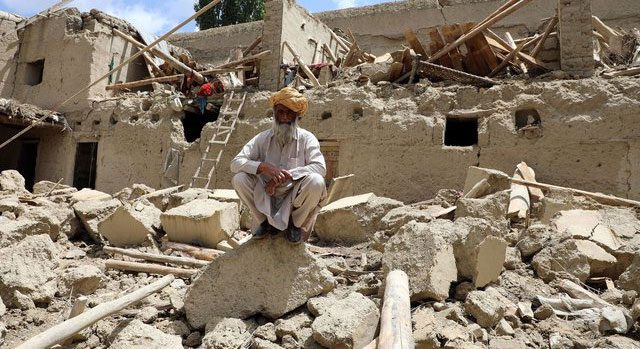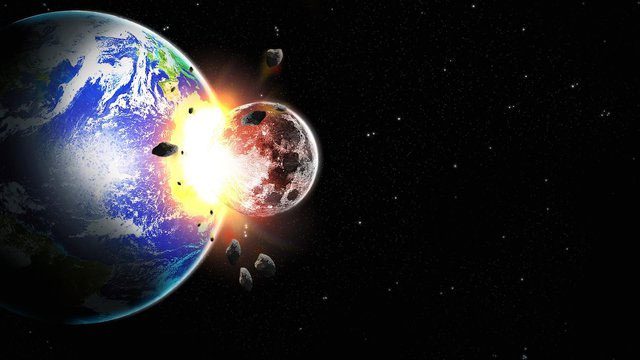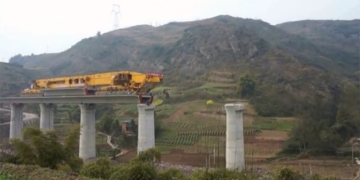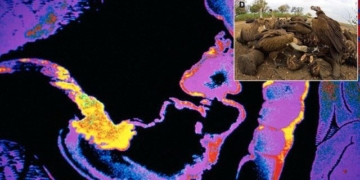Countries have invested heavily in monitoring and researching earthquakes, yet it seems that no effective method exists to prevent this disaster. Scientists have issued warnings about a potential earthquake with a magnitude of 20 on the Richter scale. What impact could such an earthquake have on the Earth and humanity?
Levels of Destruction from Earthquakes
An earthquake with a magnitude greater than 6.0 on the Richter scale is classified as a strong earthquake and can cause severe damage. In 1995, a 6.9 magnitude earthquake struck Kobe, Japan, claiming the lives of 5,500 civilians. Another 6.9 magnitude earthquake occurred in California, USA, in 1989, resulting in the deaths of 63 people. Earthquakes with magnitudes between 6.0 and 6.9 occur approximately 120 to 134 times per year.

Earthquakes with a magnitude greater than 6 can cause severe damage. (Image: CNN)
Meanwhile, earthquakes with magnitudes between 7.0 and 7.9 occur at a frequency of about 17-18 times a year. In 1948, a 7.3 magnitude earthquake resulted in the deaths of 110,000 people in Ashgabat, former Soviet Union. A 7.2 magnitude earthquake in 1908 in Messina, Italy led to fatalities ranging from 70,000 to 100,000. The 7.6 magnitude earthquake in Pakistan in 2005 resulted in 86,000 deaths, while a 7.8 magnitude earthquake in San Francisco, California, in 1906 claimed the lives of 3,000 people.

Earthquakes of 9 magnitude or higher often accompany tsunamis. (Image: Pixabay)
Earthquakes with magnitudes of 8 or higher occur about once a year. The 9.0 magnitude earthquake and tsunami in the Indian Ocean in 2004 resulted in the deaths of over 200,000 people. To date, the strongest recorded earthquake was a 9.5 magnitude quake that occurred in 1960 in Chile, leaving nearly 7,000 casualties and 2 million people homeless.

Major earthquakes can also trigger volcanic eruptions. (Image: Pixabay)
These earthquakes typically cause catastrophic devastation, often accompanied by other natural phenomena such as tsunamis, floods, landslides, or volcanic eruptions. So, what would happen if a 20 magnitude earthquake were to occur?
The Destruction Level of a 20 Magnitude Earthquake
Theoretically, an earthquake is closely related to the length of the fault line in the Earth’s crust. Thus, the longer the fault line, the stronger the earthquake. According to seismologists, a fault length of approximately 80,000 km is needed for an earthquake of 10 magnitude or greater to occur. However, since the circumference of the Earth is only about 40,000 km, such a massive earthquake is highly unlikely.
However, the documentary series What If presents a different perspective. They created a simulation titled “What If the Earth Experienced a 20 Magnitude Earthquake?”

Scientists suggest that a 20 magnitude earthquake could be triggered by an asteroid impact. (Image: Pixabay)
They propose that a 20 magnitude earthquake could indeed occur due to an external force. This would be the impact of an asteroid striking our planet. This earthquake would cause everything to shake for 5 minutes and trigger multiple aftershocks along with other disasters like tsunamis and volcanic eruptions.
A 20 magnitude earthquake would generate enough energy to overcome gravitational binding energy and potentially destroy our planet. However, What If also notes that the defense systems of many countries would detect this asteroid, and scientists would devise a response plan for the worst-case scenario.



















































